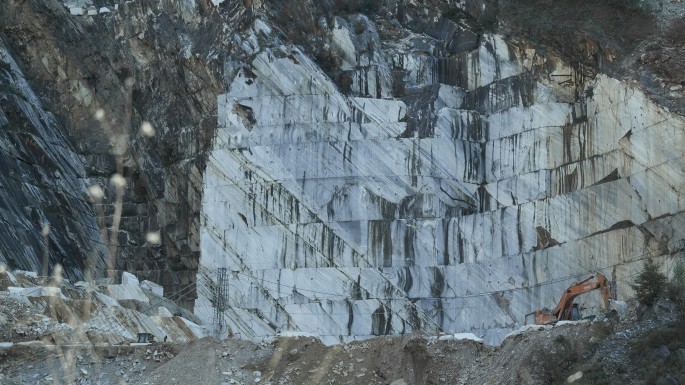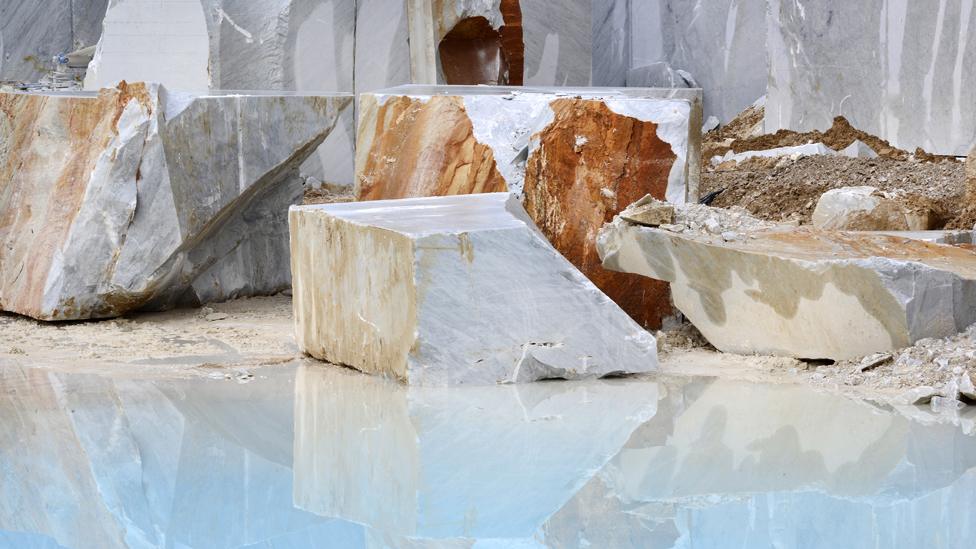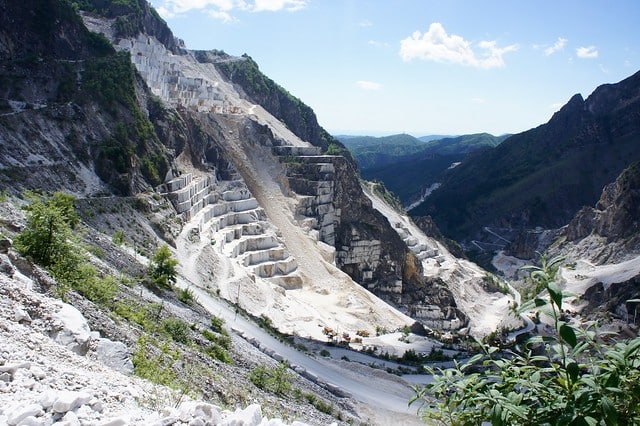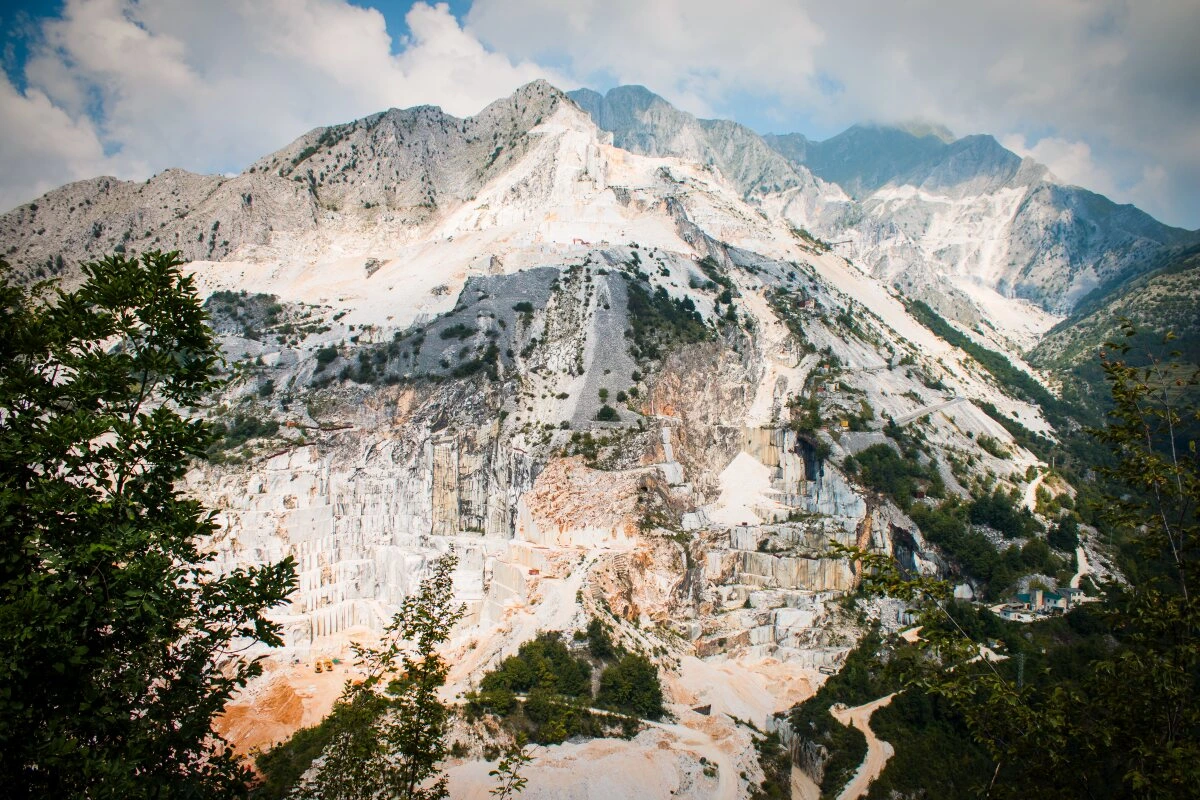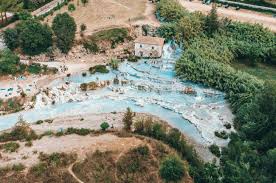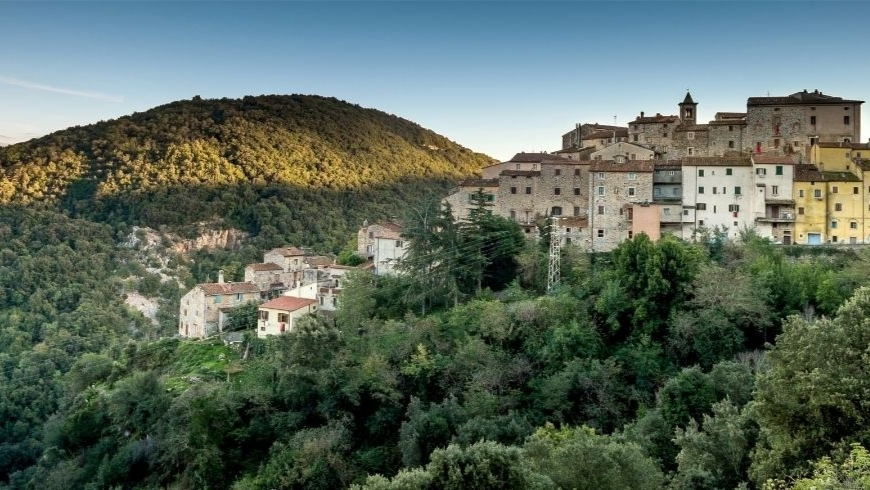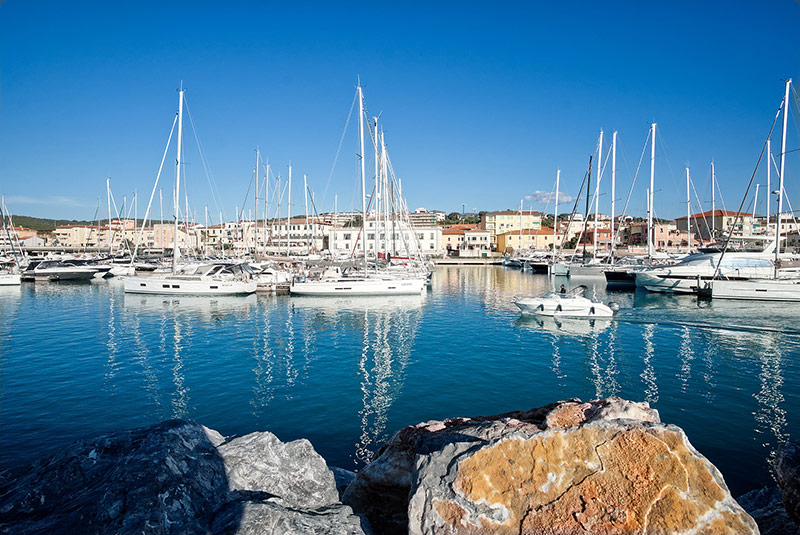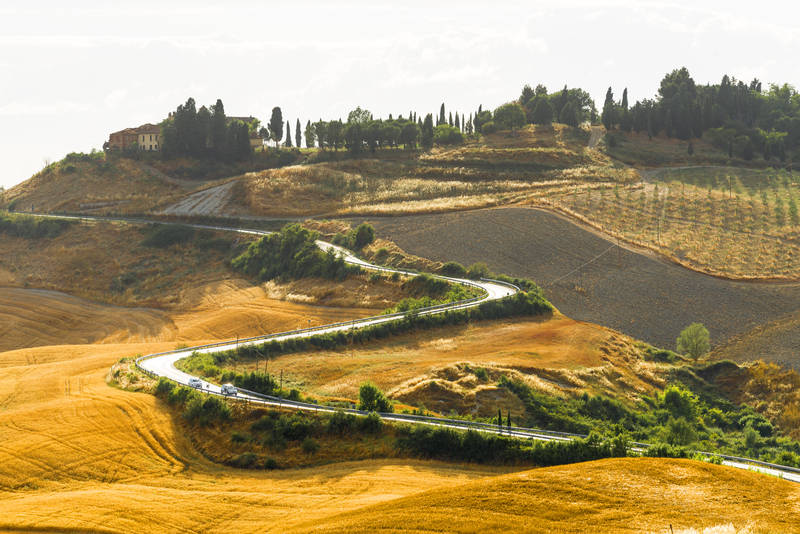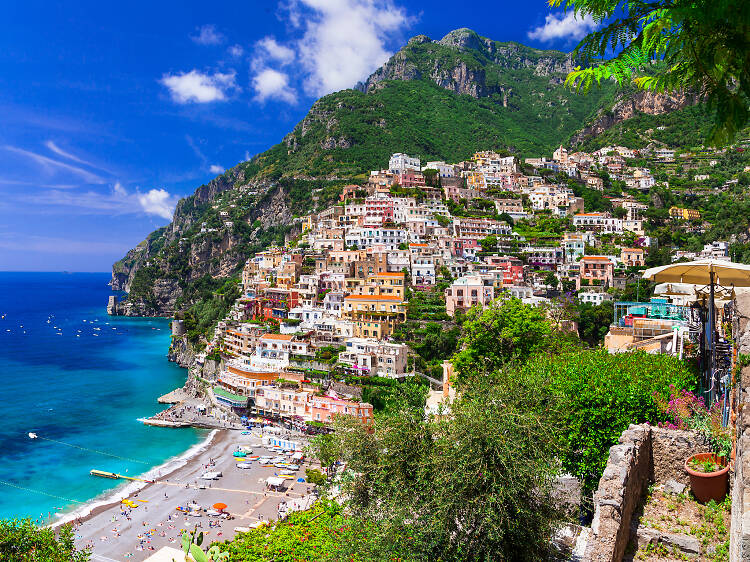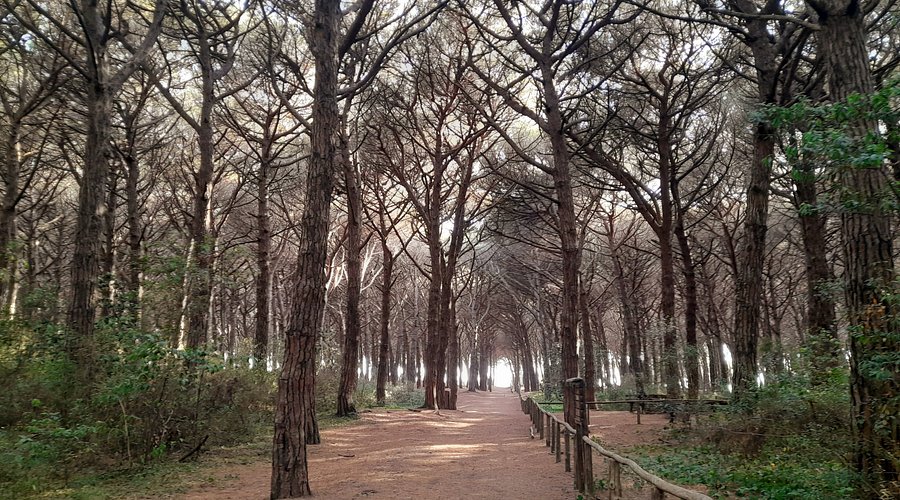The Carrara Marble Quarries
The Carrara marble quarries are a set of active, abandoned and historical quarries located between the municipalities of Carrara and Massa in the Apuan Alps region of Tuscany. They have been used since antiquity to extract Carrara marble and are the main source of marble for sculpture and construction.
UNESCO World Heritage Site
A World Heritage Site, the Marble Basin of Carrara preserves one of the most valuable and sought-after stones in the world. It is renowned for its variety of veins, colors and patterns. As time progressed, the quarries expanded and became an essential source of other types of marble, such as pink and black marbles. Production at the quarries has shifted to synthetic limestone. The Carrara quarries still produce some of Italy's finest white and pink marbles, but they are no longer the largest in Europe.
Michelangelo used Carrara marble
The quarry has been used since Roman times, but it was Michelangelo who brought fame to the Carrara white marble. He personally selected the marble used for many of his sculptures, among them "David," which stands in front of the Palazzo Vecchio in Florence. Michelangelo's work in Carrara marble inspired many artists and architects to use the same material.
Cava Museo Fantiscritti
The Fantiscritti Quarry was once the largest quarry in Carrara and was used for the extraction of marble between 1930 and 1971. It was closed in 1985 and is now used as a museum. Cava Museo Fantiscritti includes an archaeological site with workshops from the Roman period of marble extraction, as well as equipment from the modern era. In addition to exhibits that show how marble was extracted and processed, there's a section dedicated to workplace safety, which was not always a priority. You can trace how technology has affected the industry over time.
